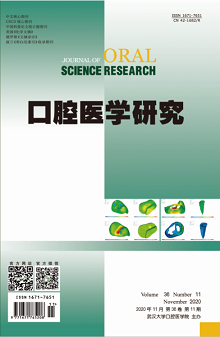|
|
Regulation and Mechanism of SIRT1 on Osteogenic Differentiation of Periodontal Ligament Stem Cells Stimulated by Orthodontic Static Pressure
ZUO Zhigang, LI Hongfa, WANG Yue, ZHENG Zhao, YANG Ziliang, LIU Shan, LIU Dayong
2020, 36(11):
1069-1073.
DOI: 10.13701/j.cnki.kqyxyj.2020.11.019
Objective: To study the effect and mechanism of SIRT1 on osteogenic differentiation of PDLSCs stimulated by orthodontic static pressure. Methods: Primary PDLSCs were cultured and the third generation of PDLSCs was divided into control group, orthodontic static pressure group, orthodontic static pressure+resveratrol group, and orthodontic static pressure+nicotinamide group. The expression of SIRT1, OCN, Runx2, acetylated NF-κB, FOXO1, acetylated FOXO1, and the contents of TNF-α, IL-6, and MCP-1 were measured. The mineralized nodules numbers of alizarin red staining after osteogenesis induction were detected. Results: Compared with the control group, the number of mineralized nodules and the expression of SIRT1, OCN, Runx2, and FOXO1 increased, the expression of acetylated NF-κB, acetylated FOXO1, and the contents of TNF-α, IL-6, and MCP-1 decreased in orthodontic static pressure group. Compared with orthodontic static pressure group, the number of mineralized nodules and the expression of SIRT1, OCN, Runx2, and FOXO1 increased; the expression of acetylated NF-κB, acetylated FOXO1, and the contents of TNF-α, IL-6, and MCP-1 decreased in orthodontic static pressure+resveratrol group; the number of mineralized nodules and the expression of SIRT1, OCN, Runx2, and FOXO1 decreased; the expression of acetylated NF-κB, acetylated FOXO1, and the contents of TNF-α, IL-6, and MCP-1 increased in orthodontic static pressure+nicotinamide group. Conclusion: SIRT1 plays an important role in the osteogenic differentiation of PDLSCs under the stimulation of orthodontic static pressure, and its possible molecular mechanism is to regulate the acetylation of NF-κB and FoxO1.
References |
Related Articles |
Metrics
|

